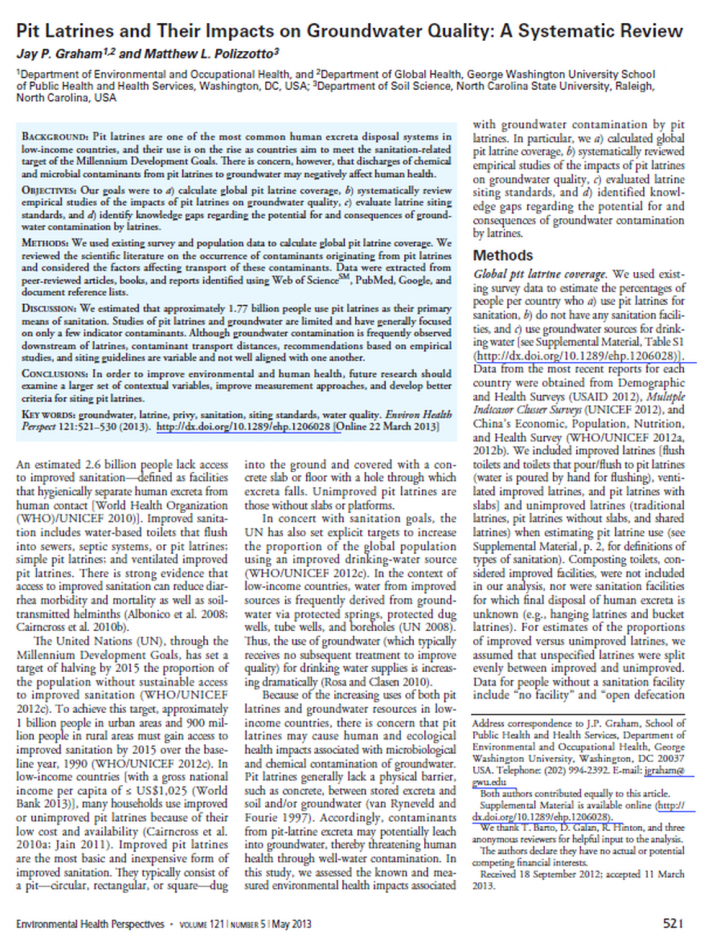Pit latrines and their impacts on groundwater quality: a systematic review - A systematic review
Jay P. Graham, J. P., Polizzotto, M. L. (2013)

Published in: 2013
Pages: 10
Publisher:
Environmental Health Perspectives, volume 121, number 5, p. 521, doi:10.1289/ehp.1206028
Author:
Jay P. Graham, J. P., Polizzotto, M. L.
Uploaded by:
SuSanA Admin
Partner profile:
common upload
7160 Views
250 Downloads
Background: Pit latrines are one of the most common human excreta disposal systems in low-income countries, and their use is on the rise as countries aim to meet the sanitation-related target of the Millennium Development Goals. There is concern, however, that discharges of chemical and microbial contaminants from pit latrines to groundwater may negatively affect human health.
Objectives: Our goals were to a) calculate global pit latrine coverage, b) systematically review empirical studies of the impacts of pit latrines on groundwater quality, c) evaluate latrine siting standards, and d) identify knowledge gaps regarding the potential for and consequences of groundwater contamination by latrines.
Methods: We used existing survey and population data to calculate global pit latrine coverage. We reviewed the scientific literature on the occurrence of contaminants originating from pit latrines and considered the factors affecting transport of these contaminants. Data were extracted from peer-reviewed articles, books, and reports identified using Web of ScienceSM, PubMed, Google, and document reference lists.
Discussion: We estimated that approximately 1.77 billion people use pit latrines as their primary means of sanitation. Studies of pit latrines and groundwater are limited and have generally focused on only a few indicator contaminants. Although groundwater contamination is frequently observed downstream of latrines, contaminant transport distances, recommendations based on empirical studies, and siting guidelines are variable and not well aligned with one another.
Conclusions: In order to improve environmental and human health, future research should examine a larger set of contextual variables, improve measurement approaches, and develop better criteria for siting pit latrines.
Bibliographic information
Jay P. Graham, J. P., Polizzotto, M. L. (2013). Pit latrines and their impacts on groundwater quality: a systematic review - A systematic review. Environmental Health Perspectives, volume 121, number 5, p. 521, doi:10.1289/ehp.1206028
Filter tags
English Faecal sludge treatment processes Groundwater protection (WG11) Recommended by SuSanA (other than SuSanA publications) Rural















